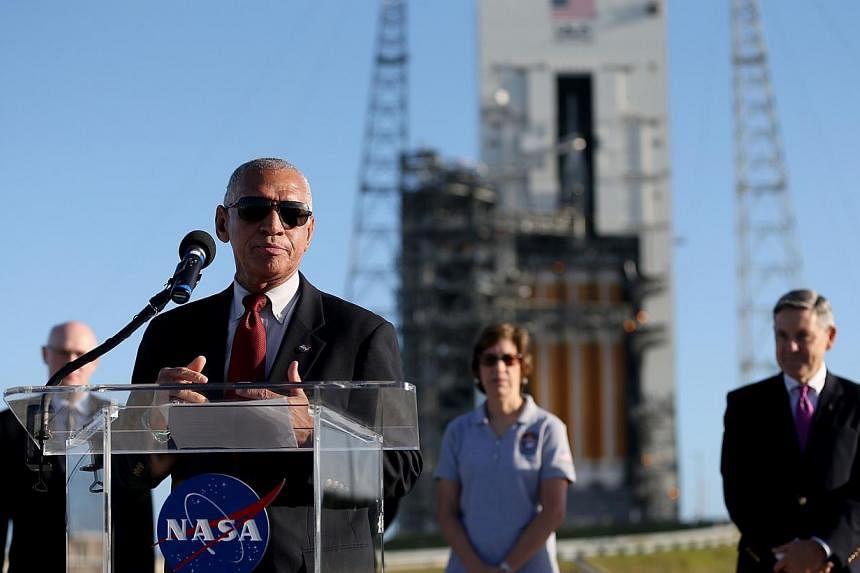CAPE CANAVERAL, Florida (REUTERS) - A new US spaceship designed to fly astronauts to Mars and other deep space destinations is poised to blast off on an unmanned test flight on Thursday.
A triple-booster Delta 4 Heavy rocket, built and flown by the Lockheed Martin and Boeing joint venture known as United Launch Alliance, was cleared for its planned launch from Cape Canaveral Air Force Station at 7.05am on Thursday, Nasa said on Wednesday.
Perched atop the rocket, the biggest in the US fleet, is Nasa's first Orion space capsule.
It is due to make a four-and-a-half hour flight to test its heat shield, parachutes and other systems needed to ferry astronauts into deep space and return them safely to Earth.
Meteorologists predicted a 70 per cent chance the weather will be acceptable for liftoff on a launch that is part of the US space agency's plan to land humans on an asteroid sometime around 2025 and on Mars about a decade later.
"Tomorrow is a giant day," Nasa administrator Charlie Bolden told reporters at the launch pad on Wednesday.
"For the first time in more than 40 years this nation is going to launch a spacecraft intended to carry humans beyond low-Earth orbit. That's a big deal."
Nasa's last human expedition beyond Earth was the final Apollo mission to the moon in 1972.
Flying the capsule without a crew allows Nasa to aggressively test how well it fares beyond the protective environment of Earth's magnetic field and during a 32,200kmh dive back into the atmosphere.
The rocket will take Orion about 5,800km into space, some 15 times farther than where the International Space Station flies, before it plunges back to Earth.
Key events, such as the jettisoning of aerodynamic panels and launch escape system and the deployment of parachutes, will be immediately apparent.
How Orion weathers other aspects of the flight will not be known until engineers retrieve recorded data from more than 1,200 sensors aboard the ship.
If all goes as planned, Orion, built by Lockheed Martin, will splash down in the Pacific Ocean off the coast of Mexico's Baja California peninsula. Two US Navy ships and other vessels will be standing by to retrieve the capsule.

